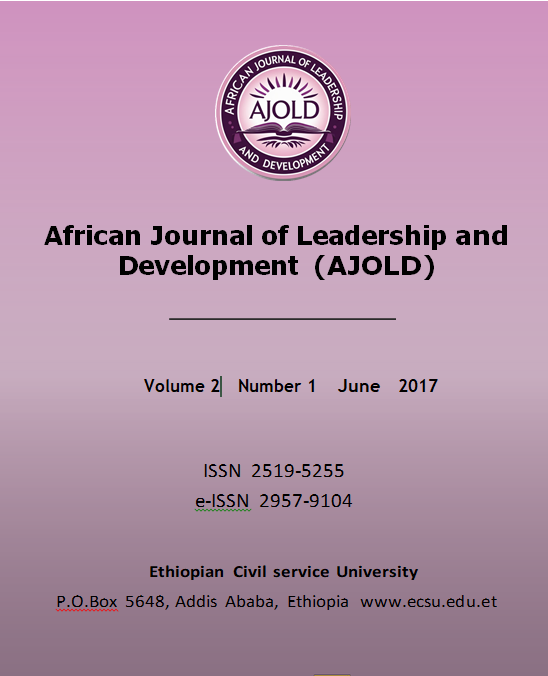Reform Trends, Coordination, and Performance Measurement in Public Sectors of Ethiopia: the Case of Oromia Regional State
DOI:
https://doi.org/10.63990/2017ajoldvol1iss1pp30-37Keywords:
Performance, Indicators, Measurement, Coordination, Oromia, EthiopiaAbstract
The general objective of this study is to assess the trends of the public sector reforms, coordination and performance measurement in Oromia regional state. The relevant data were gathered from primary and secondary data sources. A sample of 200 employees drawn from the randomly selected sectors of the regional state involved in the study. The study shows the predominance of performance management focusing on routines activities rather than long term results in public sectors of the regional state. Though there is a tendency to use performance indicators at organizational level in the regional sectors, the practice is at a lower level. The transfer of managerial approaches to public administration in Oromia regional state is clearly impeded by poor implementation of reform programs and difficulties of performance measurement, and weak coordination in the public sectors. The reform trends in the public sector are weak and have not brought the necessary changes in the organizations. Participation in public sectors is fragile, and top-down. Hence, it needs attention by officials and professionals to focus on measuring results using performance indicators. Coordination and collaboration strategies need to be designed and strengthened in the regional state.
Downloads
Published
How to Cite
Issue
Section
License
This work is licensed under a Creative Commons Attribution-NonCommercial 4.0 International License






